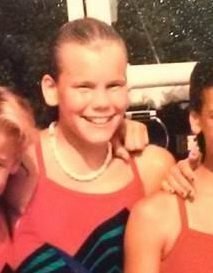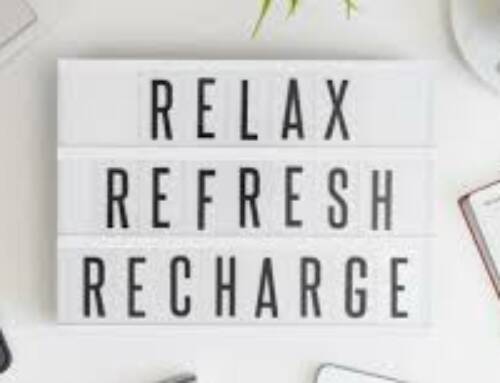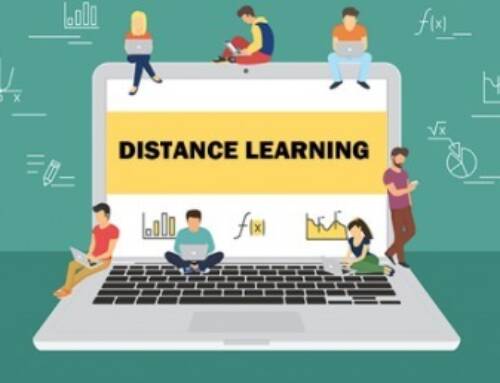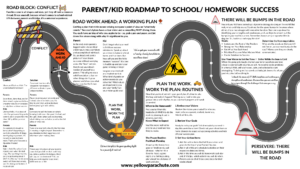Yellow Parachute’s mission is to inspire each individual to discover her or his unique gifts and use them to serve others—in short, to change the world. It’s a tall order, to look beyond test scores and profit margins to cultivate the confidence and happiness of each kid that comes our way. But I didn’t start Yellow Parachute just to churn out 35s on the ACT and dream college acceptance letters (those happen to be a side benefit 😉 ). I started Yellow Parachute because I wanted to use my own unique gifts to pay forward some of the wonderful, formative experiences of my own childhood.
Before becoming a CEO, learning coach, mother of three, wife, and dedicated life-long learner, I was a pool rat. I spent fourteen sun-kissed (sometimes sunburnt) summers at the Somerset Hills Estates Association pool-splashing, card-playing, ice-cream ordering, zinc-applying, and swimming from ages five to eighteen (first swim team when I was five because I wanted the super-sweet arena swimsuit). I hung out with the coolest and kindest teen-aged swim coaches, who taught us how to do front flips and play rummy. They took us for Dairy Queen ice cream cones when we swam personal records, music blasting and windows rolled down (yes I had my seatbelt on, Mom). These are some of my best memories of “being a kid in the summer.” And they involve bigger kids who looked out for us, taught us, created community, and inspired us to meet goals and break records.
In my teens, I followed suit and graduated to SHEA ’s lifeguard, water safety instructor (WSI), and swim team coach of pool-splashers, card players, and ice-cream orderers. I took over the job of mentor with joy at paying forward the years and laughs I was gifted. It was through my roles as lifeguard and WSI that I became fascinated with the mechanics of teaching. I spent hours with my WSI book, studying the ways to break each stroke into smaller movements and postures (back crawl: shoulder-shoulder out of the water, pinky first in the water) and then put them back together when a student was ready (breaststroke: pull, breathe, kick, glide).
Personalizing the lesson for each of my students came naturally. It made sense to use the analogy, wording, or acronym that would help each student see or feel the movement in such a way that she could recreate it with her own body. To take the strengths the student was showing me and turn them into supports for the pieces of the puzzle they were still working on.
Looking back, I see those early swim lessons as vital preparation for my later tasks of teaching kids how to read or solve a math problem. As a swim instructor, I could immediately see how my students were processing my directions and how I needed to adjust them accordingly to help them master their own individual technique. Academic subjects are a little trickier for teachers because a student’s way of processing is less apparent, but the idea (ideally) is the same: watch (or listen for) how a student’s mind reshapes the world and (a la vision-correcting lenses) adjust your input accordingly. And what a feeling, when it works—when you and your student can start from wildly different places and help each other arrive at the same conclusion. It’s a particular breed of communion that I reach for again and again, and Yellow Parachute has been the highest expression of this reaching.
I studied in Germany during my junior year of college and accompanied my friend Karyn to Munich, where she sat for the Medical College Admission Test (MCAT). While tenacious Karyn was darkening her bubble sheet line-by-line in the next step toward her adulthood, I sat in our hotel room staring out at the rooftops and wondering, “What in the world do I want to be when I grow up?”
Looking out at the rooftops of homes below, I recalled my curiosity and perseverance with teaching swimming and the joy I felt when I was working with kids, in addition to the great mentorship I received as a swimmer—the comradery, belonging, and confidence built in these early days of my life. I could trace my times of fulfillment and living gifts to working with and teaching children. So when I returned home I began researching teaching programs. It was the University of Minnesota’s top-ranked program that first drew me here in 1997.
I started my teaching career in the Edina school system in 1999 after student teaching in the district. I (as do the many educators living out their calling) poured my time, energy, and dollars into creating a safe and supportive classroom environment that developed confidence and autonomy in my learners. I graphed my student’s responses, practiced “wait time” to make sure all learners had the chance to answer questions, and knocked on my colleagues’ doors for tips on scaffolding and differentiating to meet the needs of my whole class. I spent daily long-runs around Lakes Harriet, Calhoun, Cedar, and Lake of the Isles, working out all the ways I could support a learner in a particular skill, from staying in his or her seat to writing a sentence independently. The joy was (and still is) in the journey, and the view kept getting better with the climb.
Not long into my teaching career, I got a call from the parent of a youngster I’d had as a first grader who was looking for a tutor in second grade. They were working with a learning specialist and had thought of working with me because of the connection we’d made in my classroom. The learning specialist and I discussed the student’s strengths and weaknesses and the teaching techniques that helped her learn the best way for her. One of our most effective approaches was making flashcards to help her remember her spelling words, so she could stand over them and pick them up.
This act of combining kinesthetic movement with a memory activity was pivotal for me. I realized that I could take the same type of feedback I’d looked for with my swimming students and apply it to my academic practice. My eyes opened to what I could do in a 1:1 teaching environment and I was hooked. The classroom was a wonderful and vibrant place for me to be, but it did not afford the opportunity to listen to and watch each individual student as much as I wanted to. I realized that my gift was for innovating based on what I saw and heard from each student. And the flip-side of the joy at this realization was the pain of realizing the students that “I didn’t get to watch” each day simply because of the number of students in my classroom. I couldn’t nobly let go and say, “I did my best.” I felt a deep sense of failure for the students whose needs I was not “perfectly” (there’s that embattled perfectionist word again) meeting. And so, I started Yellow Parachute — out of the calling to use the unique and specific gifts I’ve been given as an educator. I saw the opportunity to gather like-minded professionals with a passion for ensuring the success and confidence of every child in their care.
That’s how I found my purpose. Now let’s talk about how you (or your kids) can find yours.
Steps to finding your purpose, from Angela Duckworth:
Purpose is the intention to contribute to the well-being of others. The desire to connect is a basic a human need, and you can discover your purpose by noticing where you talents for connection lie. Once you have a purpose, you can cultivate grit in pursuing it. Gritty people seek and meaningful lives that connect to and improve the lives of others.
Discover
To start, answer these questions:
Where does my mind wander?
What do I like to do in my free time?
How do I enjoy spending my time? What do I find absolutely unbearable?
If you aren’t sure of the answers, try thinking back to your teens, which is the developmental stage at which serious interests start to bloom. It’s also the moment before your true wants get mixed up in what your family, friends, or society at large tells you you’re supposed to want.
Act
Once you have even the faintest idea of what you’re interested in, go out and just try something! It’s okay if you wind up not liking it; this is an experiment. However vague your interests are at the start of the experiment, there are some things you know you’d hate doing for a living. And then there are things that you can imagine (possibly) liking.
You’re guessing at the start, so don’t be ashamed of the trial-and-error quality of your actions. Find something that feels pretty good, see if it blossoms into passion and fulfillment, and if it doesn’t, it’s okay to move on to try something else.
Cultivate
If you already have a good idea of what you like to spend your time doing, take the time to develop your interest. Interest inevitably waxes and wanes over time, so be prepared to trigger it again and again and again. Set new goals and challenges, or find a mentor to help make you accountable.
Be Loyal To Your Passion
If you’ve been doing something for a few years and still don’t feel excited about it, your brain might be asking for novelty—the chance to try something new. If you’re at peace with that, give yourself permission to move on. But even if a small part of you wants to stick with your endeavor, try looking at it with fresh eyes. Where is the beauty and satisfaction for you in these tasks? What haven’t you mastered? Sometimes boredom can be a sign that you need to move deeper into your craft, rather than moving on from it. If that statement resonates with you, stay loyal to your passion and your courageous and meaningful life.
-Cara







